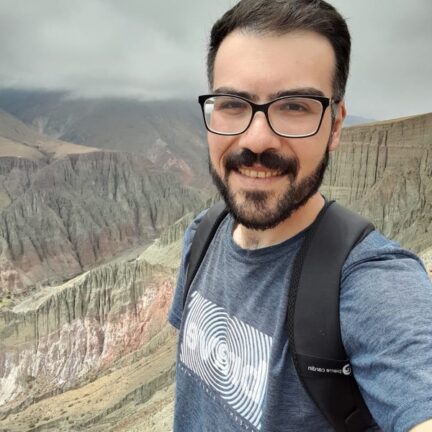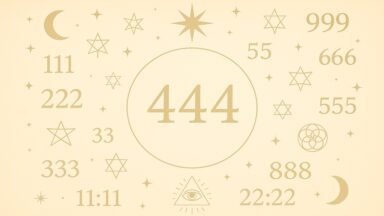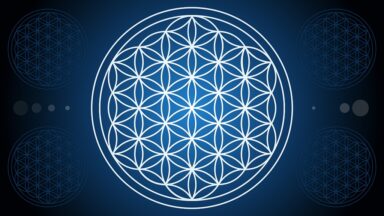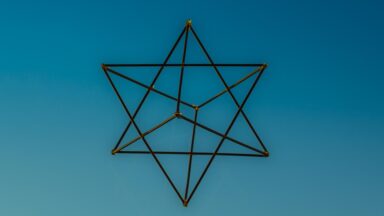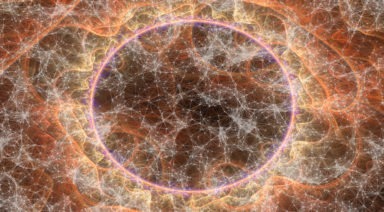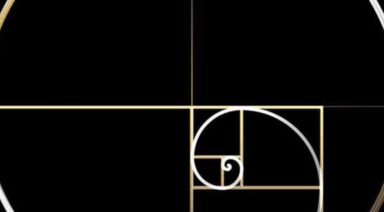What Are the Platonic Solids, Pillars of Sacred Geometry?
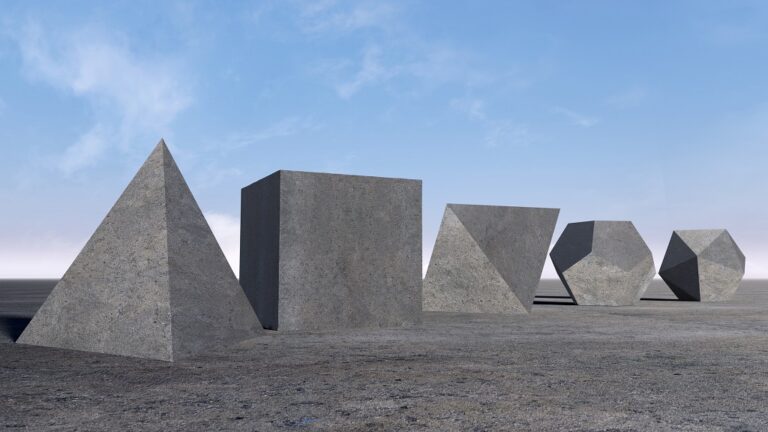
Platonic solids are highly symmetrical three-dimensional geometric figures that have fascinated mathematicians, philosophers and mystics for centuries. They are considered the fundamental building blocks of creation in the universe, representing essential elements and profound spiritual concepts. In this article we explore what Platonic solids are, their origin, their spiritual significance and their connection to sacred geometry.
Table of Contents
- What Are Platonic Solids?
- Where Does the Name of Platonic Solids Come From?
- One by One: The 5 Platonic Solids
- Platonic Solids in Sacred Geometry
- History and Origin of Platonic Solids
What Are Platonic Solids?
Platonic solids are five geometric figures: the tetrahedron, the hexahedron (cube), the octahedron, the dodecahedron and the icosahedron. Each of them has equal faces, edges and angles, which gives them perfect symmetry. These geometric shapes were studied by the Greek philosopher Plato, who associated them with the fundamental elements of nature.
These solids are not only mathematically interesting, but also have deep significance in sacred geometry. They are believed to be the basic patterns that form the structure of the universe, from subatomic particles to galaxies. The symmetry and balance of Platonic solids reflect the inherent harmony of the cosmos.
In the series Sacred Geometry: Spiritual Science available on Gaia, Dr. Robert J. Gilbert explores how Platonic solids are essential to understanding the structure of the universe and our own inner energies. Through his teachings, he reveals how these geometric shapes can be used in spiritual and meditative practices to enhance spiritual awareness and connection.

Where Does the Name of Platonic Solids Come From?
The name “Platonic solids” comes from the Greek philosopher Plato, who described them in his work “Timaeus”. Plato linked each of these solids to the five classical elements: earth, air, fire, water and ether. According to Plato, these elements formed the basis of all matter in the universe, and the Platonic solids represented the perfect structure of each of these elements.
Plato was not the first to discover these forms, but he was the one who popularized them and gave them philosophical and cosmological significance. His association of solids with the fundamental elements influenced philosophy and science for centuries, highlighting the importance of geometry in understanding the physical and spiritual world.
One by One: The 5 Platonic Solids
The five Platonic solids are the tetrahedron, hexahedron (cube), octahedron, dodecahedron and icosahedron. Each of these solids has equal faces, edges and angles, which gives them perfect symmetry.
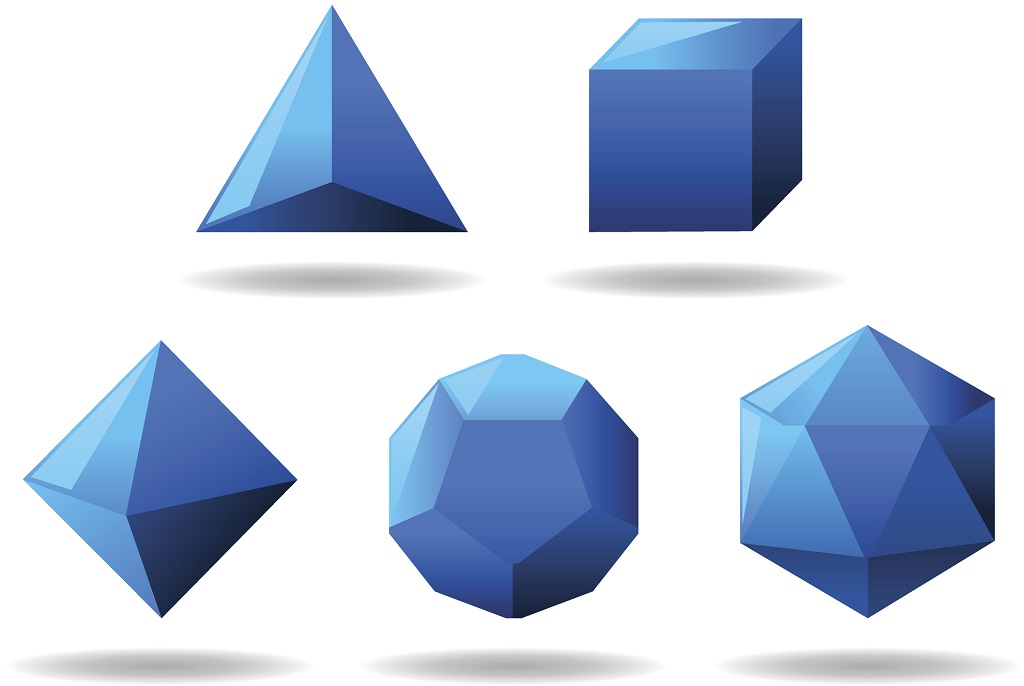
-
The Tetrahedron
The tetrahedron has four triangular faces, six edges and four vertices. It represents the element of fire and is associated with the solar plexus chakra. This solid symbolizes transformation and dynamic energy, and is used in meditative practices to manifest desires and promote mental clarity.
-
The Hexahedron (Cube)
The hexahedron, better known as a cube, has six square faces, twelve edges and eight vertices. It represents the earth element and is related to the root chakra. The cube symbolizes stability and solidity, providing a firm and secure foundation on both the physical and spiritual planes.
-
The Octahedron
The octahedron has eight triangular faces, twelve edges and six vertices. This solid is associated with the air element and the heart chakra. It represents balance and harmony, and is used to improve communication and promote mental and emotional clarity.
-
The Dodecahedron
The dodecahedron has twelve pentagonal faces, thirty edges and twenty vertices. It represents the ether or the universe and is associated with the crown chakra. This solid symbolizes connection with the cosmos and exploration of the mysteries of the universe, encouraging spiritual expansion and higher consciousness.
-
The Icosahedron
The icosahedron has twenty triangular faces, thirty edges and twelve vertices. It represents the water element and is related to the sacral chakra. This solid symbolizes fluidity and adaptability, promoting creativity and emotional expression in spiritual practices.
Platonic Solids in Sacred Geometry
In Sacred Geometry, the Platonic solids are considered the most basic and fundamental forms that make up the structure of the universe. These geometric forms, with their perfect symmetry and proportions, are seen as the building blocks of the cosmos, used at various levels of creation, from microscopic to macroscopic structures. Their symmetry reflects the harmony and order inherent in nature.
Each platonic solid has unique properties that make them powerful tools in meditation and energy practices. For example, the tetrahedron can be used to focus intention and manifest desires, while the cube helps to stabilize and ground energy. The octahedron promotes mental and emotional clarity, the icosahedron enhances fluidity and creativity, and the dodecahedron facilitates connection with the divine and expansion of consciousness.
The application of Platonic solids in sacred geometry is not only limited to spiritual practices; they are also found in art, architecture and science, demonstrating their relevance throughout the ages. These forms serve as bridges between the physical and the spiritual, providing a solid foundation for exploring and understanding the energies that surround us and the structures that make up our universe.
History and Origin of Platonic Solids
The history of Platonic solids dates back to ancient Greece, where they were first studied by the followers of Pythagoras and later described in detail by Plato in his dialogue “Timaeus”. Plato related each of these solids to the fundamental elements of the universe, attributing deep cosmological meanings to them and using them to explain the structure of matter and the cosmos.
In addition to Plato, other Greek mathematicians and philosophers, such as Euclid, also studied and formalized the geometric properties of these solids. Euclid, in his work “Elements”, defined and proved the properties of the Platonic solids, establishing a solid basis for geometry that would influence mathematics for centuries.
During the Renaissance, interest in Platonic solids resurfaced, especially through the work of the astronomer Johannes Kepler. Kepler used these solids to explain planetary orbits in his “Mysterium Cosmographicum”, proposing that the distances between the planets were related to the Platonic solids. Throughout history, these geometric shapes have continued to inspire scientists, artists and mystics, establishing themselves as symbols of harmony and perfection in the structure of the universe.
What Does 444 Mean? An Invitation to Organize Your Inner World
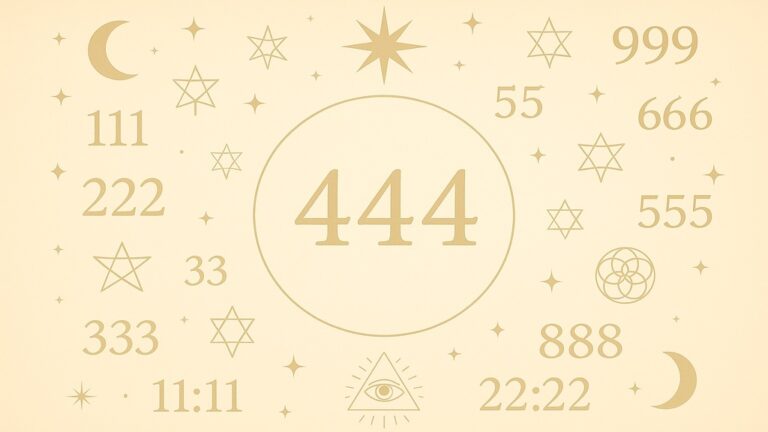
If you’ve started seeing the number 444 constantly, it’s not something you should ignore. This numerical sequence appears as a sign to pause and observe how you are building your reality. It’s a key moment to strengthen your inner foundation and organize what sustains you. In this article, we explore what 444 means, why it keeps showing up, and how you can interpret it as a message of protection, order, and inner stability.
Table of Contents
- What Does It Mean to See 444 Repeatedly?
- The Deeper Spiritual Meaning of 444
- 444 as an Angel Number: Connection With Your Spiritual Guides
- 444 in Love: Balance and Soul Connection
- What to Do When 444 Appears in Your Life
- Other Numbers That Often Accompany 444
What Does It Mean to See 444 Repeatedly?
Seeing 444 repeatedly is not a coincidence. This number comes as a reminder that you have a spiritual support structure sustaining you through your process. Even if you don’t yet have all the answers, its message is clear: you are moving forward on solid ground and can trust the path you’re on.
Additionally, encountering this sequence in different contexts may invite you to reevaluate your priorities. 444 urges you to reaffirm your decisions, organize your inner world, and act with greater coherence. Its constant presence is a reminder that every small step counts, and your stability depends on the order you cultivate within.
The Deeper Spiritual Meaning of 444
444 carries a spiritual meaning associated with protection, structure, and trust. This number appears when it’s time to put your thoughts, emotions, and actions in order. It invites you to reconnect with what is essential and to build from a more solid place.
On a deeper level, its presence suggests that you are entering a phase where you need clarity, focus, and inner discipline. It’s a sign that you’re surrounded by an energy that guides you to make firm decisions, set clear boundaries, and move forward with more confidence.
In the series Mystery Teachings, available on Gaia, these number patterns are explored as languages that reveal invisible connections between your daily life and universal energies. There you can dive deeper into how sequences like 444 can become practical guides for navigating the changes and opportunities appearing in your life.
444 as an Angel Number: Connection With Your Spiritual Guides
444 is considered an angel number because it appears as a reminder that you are not alone. Its frequent presence indicates that you have the support of your spiritual guides, who are accompanying you in the process of organizing your life and building on solid foundations. This sequence shows up during moments when you need clarity, support, and a more defined direction.
When 444 appears, it is a sign to open your perception to the subtle guidance that is already surrounding you. This presence may manifest through dreams, signs, or intuitions that confirm you are not walking this path without help. Recognizing this spiritual companionship can bring you peace and help you make decisions with greater confidence.
Moreover, 444 represents the balance between the material and the spiritual. Its message reminds you that what you think, feel, and do should be aligned with a deeper purpose. Your guides are collaborating with you so that this purpose can take tangible form, helping you bring order to your life from the inside out.
444 in Love: Balance and Soul Connection
When 444 appears in matters of love, its message is to strengthen the structure of your relationships. This number represents harmony, trust, and commitment, and reminds you that authentic relationships are built on solid foundations—not on urgency or emotional confusion.
It may also indicate that you are entering a stage of deeper connection with someone who resonates with your path. Whether you’re getting to know someone new or deepening an existing relationship, 444 invites you to value emotional stability and energetic balance within the bond.
At the same time, this number encourages you to pause and observe how you are holding your emotional space in the relationship. Are you respecting your own boundaries? Are you giving from a place of balance? 444 urges you to bring order to your emotional world so that love can flourish from a conscious and genuine place.

What to Do When 444 Appears in Your Life
When 444 shows up repeatedly, the first thing you can do is pause and observe how you feel in that moment. Ask yourself whether you’re listening to your intuition or if there’s something inside you that needs to be realigned. This sequence is an invitation to take a moment of stillness to reconnect with your purpose and your true priorities.
Keeping a record of the times when 444 appears can also be very helpful. Writing down in a notebook or journal when this sign shows up, the context, and what emotions you feel will help you identify patterns and better understand the message it brings to you. Over time, you’ll discover that this number acts like a mirror reflecting the inner changes you are experiencing.
It’s also important to stay open to the guidance that 444 brings. Practicing meditation or simply dedicating a moment to inner silence can help you receive clarity and confidence in your next steps. Remember that 444 doesn’t arrive to tell you what to do, but to remind you that you are being supported and that every decision matters on your path.
Other Numbers That Often Accompany 444
444 often appears alongside other number sequences that amplify or complement its message. These combinations are part of a symbolic language the universe uses to guide you and help you understand the moment you’re living through.
- 11:11: Spiritual awakening: This number signals that you are in an energetic portal that propels you to raise your consciousness. It’s a reminder that you are ready to align with your deepest purpose.
- 22:22: Manifestation and balance: Represents the ideal moment to act with confidence and coherence. It’s a confirmation that what you think and what you do are taking shape in your life.
- 1234: Progressive advancement: Indicates that you are moving step by step toward a greater goal. This number reflects that every small effort is contributing to significant change.
- 111: Intention and creation: Indicates that your thoughts are creating your reality and that you need to pay attention to what you are manifesting. It’s a call to align your mind with your most authentic desires.
- 222: Harmony and trust: Symbolizes the importance of staying calm and trusting the process you’re going through. It reinforces the need to find balance between what you desire and what you are manifesting.
- 333: Spiritual expansion: Shows that you are in a moment of inner growth and that your guides are near. It’s a push to express your truth with authenticity and courage.
- 555: Transformation and change: Indicates that a period of deep transformation is approaching. This number encourages you to let go of what no longer serves you so you can receive the new with more strength.

